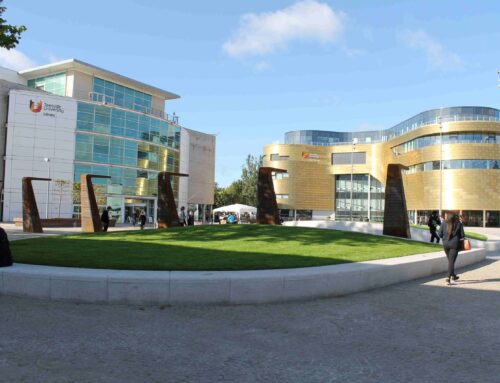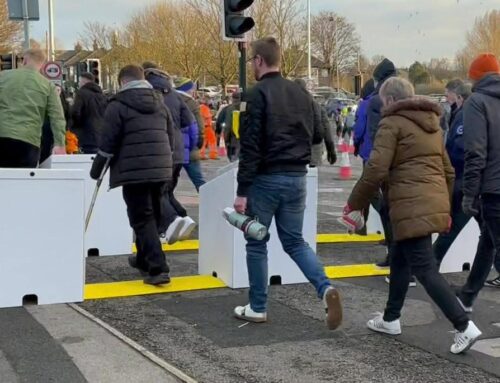
Whenever lives are lost due to a terror attack, there are always, quite rightly, calls for lessons to be learned. After a week of investigations following the New Orleans attack and the evidence that has emerged, it is clear that there are many lessons that can be learned from the dreadful events of New Year’s Eve; both in terms of understanding the threat and improving preparedness.
The incident may have taken place on the other side of the world, but the implications and warning signals are global. Let’s not forget, that this was not the only terror attack to take place over the festive period, with Magdeburg also still in mourning the six people killed at a Christmas market only a week earlier, with both attacks taking place at outdoor events routinely held in the same location each year.
We can’t stop terrorists from planning and implementing attacks, what we can do is mitigate risk. Scrutinising what the attacker did and how they exploited vulnerabilities at the attack location is critical to developing our understanding of risk, resilience and operational factors.
New Orleans – what we know so far
The French Quarter in New Orleans is well-known for its celebrations, including New Year and Mardi Gras. With the Superbowl due to be played in the city in February, the focus on making the streets more secure was preparing for crowds descending on New Orleans for the big game, which meant that the improved defences planned were not in place in time for the attack on New Year’s Eve.
The attack was planned and pre-meditated. The authorities believe that the perpetrator acted alone, but he had planned and put in place three tactics: using a vehicle as a weapon, procuring a firearm and planting two IEDs, neither of which exploded.
It has also come to light that the attacker had carried out hostile reconnaissance, visiting the city twice before the attack and recording the attack location by riding through the streets wearing Meta glasses. These are spectacles that look like ordinary eyewear but can record footage – footage undoubtedly used to help the attacker plan his offensive in more detail.
The authorities are also investigating previous trips the attacker made earlier last year. These may be unrelated, but it is also a possible indication that he had help from others in planning the attack. .
Hostile vehicle mitigation
There were permanent HVM bollards in place in the French Quarter, but this equipment had not been deployed on the night of the attack and the bollards were in the process of being replaced ready for the Superbowl next month. Whether the decision not to deploy the HVM was because the system was faulty, or because of concerns from local businesses that trade was affected when the protection was in place is unclear. What is clear, however, is that a police vehicle was parked to deter vehicles from entering Bourbon Street where the attack took place; a traffic management measure which was not effective as a hostile vehicle mitigation strategy.
So what can we learn from this?
Firstly, we can learn that it’s important to understand the threat, vulnerability and risk of every event, not just the most high profile or unusual occasions. New Year celebrations in the French Quarter are routine, but they are also popular, attracting large crowds into a location with congested streets and scant means of escape.
Secondly, operational considerations matter. Whether or not dissent from local businesses was a cause of non-deployment, it is a factor that needs to be taken seriously when planning counter terrorism protection. There have been calls for the area to be permanently pedestrianised, both before and since the attack, but even permanent pedestrianisation needs to incorporate HVM, because an attacker won’t respect a pedestrianised zone, in the same way that they won’t respect pavements or traffic management signage.
Multiple tactics
The level of planning and multiple attack methods that went into the New Orleans attacks is chilling, but not surprising. It is important to remember that a risk assessment and counter terrorism strategy that focuses on hostile vehicle attacks alone is not sufficient. As with this attack, a vehicle is often only one tactic in a planned attack, used by terrorists not only to achieve maximum damage with an easily accessible tool, but also to gain access to the crowded space, where additional weapons can be used.
Preparedness is improved when the risk assessment considers the potential for multiple tactics, along with the layout of the location, the potential for hostile reconnaissance and the predictability of the event. As we await Martyn’s Law legislation, it is worth remembering that much of the draft bill focuses on the importance of training and response plans – having people on the ground who know what to do should the worst happen.
What next for the UK?
The UK has also experienced devastating terror attacks. A stroll around key sites in London highlights how far we have come in recognising the threat and putting physical measures in place to mitigate risk. But the picture varies dramatically across the country, and town and city centre events are still routinely being held with inadequate, or non-existent protection. The philosophy that ‘something is better than nothing’ or that a visible barrier of some kind will act as a deterrent is naïve. As we have seen from the New Orleans attack, terrorists are often informed, meticulous and tech savvy; they do their homework, and so must we.
It’s important not to panic. There may have been two attacks over the festive period, but attacks are still rare and our counter terror policing and intelligence services do a great job of intercepting potential threats. But the recent attacks are a reminder that the risks exist and should be mitigated by understanding the threat and vulnerabilities and putting effective, proportionate measures in place.
There are no words to express the sadness and horror of what happened in New Orleans on New Year’s Eve. Let’s hope the legacy it leaves is not just loss, but also positive action to protect others in the future.




